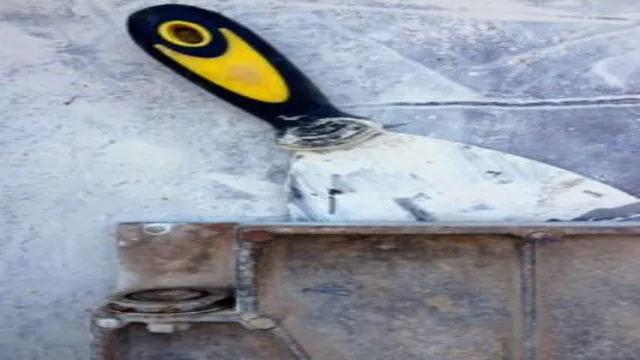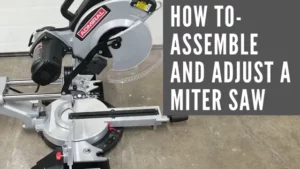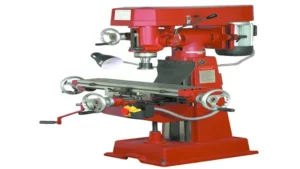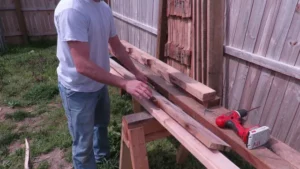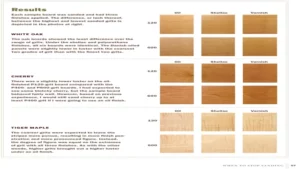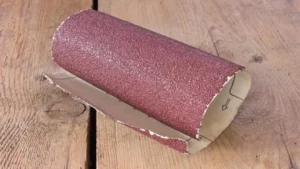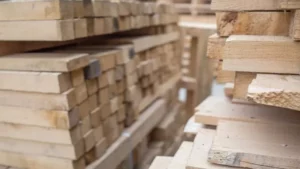Have you been using a paint scraper for a while but noticed that it’s not as sharp as it used to be? A dull paint scraper can make your job more difficult and time-consuming, leading to frustration and subpar results. But don’t worry, sharpening a paint scraper is easier than you might think. In this blog, we’ll show you the simple steps to reviving your old paint scraper and restoring its sharpness.
Keep reading to learn how to make your scraper glide smoothly on any surface, removing paint and caulk with ease.
Why Sharpening Your Paint Scraper is Important
Sharpening your paint scraper is an essential step in ensuring a clean, even surface when you’re preparing a surface for a new coat of paint. A dull scraper can leave behind noticeable scratches and gouges in the surface, which can be difficult to remove. If you’re wondering how to sharpen a paint scraper, there are several techniques you can try.
One option is to use a sharpening stone or sandpaper to remove any nicks or burrs on the blade. You can also use a file to sharpen the edge of the scraper. Whatever method you choose, it’s essential to maintain a consistent angle as you sharpen, typically around 45 degrees, to create a sharp, even edge.
With a well-sharpened scraper, you’ll be able to remove old paint or other materials quickly and efficiently, leaving behind a smooth surface that’s ready for a fresh coat of paint.
Prevents Damage to Surfaces
When it comes to paint scraping, sharpening your tool often gets overlooked. However, it’s essential to keep your paint scraper sharp to prevent damage to surfaces. When a scraper is dull, it can drag along the surface, causing scratches, gouges, and other damages that can be tough to repair.
A sharpened paint scraper ensures that you are effectively removing the paint without causing any damage to the substrate. Additionally, a sharp tool can save you time and effort by making the scraping process more efficient. So, don’t forget to sharpen your paint scraper before starting any paint scraping project.
Your surfaces and your wallet will thank you!
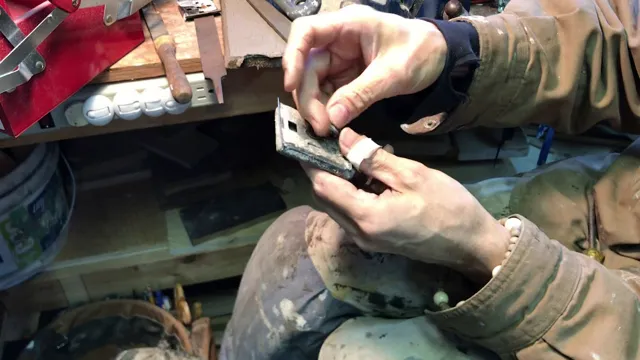
Ensures Consistent Results
Sharpening your paint scraper is a crucial step for achieving consistent results in your painting projects. A dull scraper can cause frustration, as it doesn’t effectively remove old paint layers or smooth out rough surfaces. By sharpening your paint scraper, you can ensure that each stroke is precise and efficient, allowing you to achieve a smooth finish on your surfaces.
Additionally, a sharp scraper reduces the risk of damaging your surfaces, saving you time and money in the long run. Remember, a well-maintained tool is essential to achieving a professional-looking paint job. So take the time to sharpen your scraper regularly, and you’ll see the difference in your results.
What You’ll Need
To sharpen a paint scraper, you’ll need a few tools and supplies. Firstly, you’ll need a sharpening stone or file to reshape the blade. Look for a fine-grit stone or file, as this will give you a sharper edge.
Secondly, you’ll need some honing oil or water to lubricate the sharpening process, as this prevents any damage to the blade and keeps it cool. Before you begin sharpening, it’s important to clean the blade thoroughly and remove any rust. You can use steel wool or sandpaper to do this.
Once you have everything ready, hold the scraper at a 45-degree angle against the sharpening stone and move it back and forth in a smooth motion. Keep a consistent angle, and avoid pressing too hard, as this can cause the blade to become damaged. Test the sharpness by running your fingernail across the blade; if it catches, the scraper is sharpened and ready to use.
By following these steps, you can easily sharpen your paint scraper and get the job done efficiently.
Paint Scraper
When it comes to removing old paint from surfaces, a paint scraper is a handy tool to have on hand. To get started, you will need a good quality paint scraper with a sturdy handle. Look for one with a sharp blade and a comfortable grip that will allow you to apply pressure as needed.
You’ll also need a drop cloth or plastic sheeting to protect the surrounding area from paint debris. Wear protective goggles to shield your eyes from flying paint chips and dust. To make the scraping process smoother, you can use a heat gun or a hairdryer to soften the paint before you begin.
Finally, have a trash can or bag nearby to dispose of the scrapings as you work. With these tools and materials, you’ll be well on your way to achieving a smooth, clean surface for your next painting project.
Sharpening Stone or Sandpaper
When it comes to sharpening your knives or other tools, you have a few options. Some people use sharpening stones, while others prefer sandpaper. Either way, you’ll need a few key items to get started.
For sharpening with a stone, you’ll need the stone itself as well as some lubricant, such as water or oil, to help the blade slide over the surface smoothly. You might also want a honing guide to help you keep the blade at the proper angle. If you choose to use sandpaper, you’ll need a few different grits, ranging from coarse to fine, in order to achieve the desired sharpness.
Additionally, you’ll want to use a backing plate to ensure the sandpaper is flat and even. Whichever method you choose, make sure to take your time and be careful to avoid injury while working on your tools.
Protective Gloves
When it comes to protecting your hands, a good pair of gloves is essential. But with so many options on the market, it can be overwhelming to know where to start. First and foremost, consider the material.
If you’re working with chemicals or hazardous materials, look for gloves made of nitrile or neoprene. If you’re working with sharp objects, opt for cut-resistant gloves made of materials like Kevlar. Additionally, think about the type of task you’re doing – for example, if you’re working with food, choose gloves that are food-safe and compliant with FDA regulations.
It’s also important to make sure you’re choosing gloves that fit properly – too tight or too loose can both be dangerous. Ultimately, the right gloves for you will depend on your specific needs and the nature of your work. By taking these factors into account, you can ensure that your hands stay protected and your work is done safely and efficiently.
Steps to Sharpen Your Paint Scraper
If you want to make sure your paint scraper is as effective as possible, then it’s important to keep it sharp. Luckily, sharpening a paint scraper is a relatively straightforward process that can be done with a few simple steps. First, you’ll need to gather the necessary tools, which include a sharpening stone or file, some oil or water to lubricate the stone, and a pair of gloves to protect your hands.
Once you have everything you need, you can begin by placing the scraper onto the stone at a 45-degree angle and starting to draw it across the surface using even pressure. It’s important to maintain this angle throughout the sharpening process to ensure that the blade is as sharp as possible. You may need to repeat this process several times to achieve the desired level of sharpness.
Once you’re happy with the result, wipe the blade clean and apply a little oil to prevent rusting. Following these simple steps can help to ensure that your paint scraper is always sharp and ready to use.
Step 1: Prepare the Paint Scraper
To properly sharpen your paint scraper, the first step is to ensure it’s clean and free of any rust or debris. Grab a wire brush to remove any loose debris stuck on the scraper’s surface, then scrub it down with soap and water. Once it’s dry, hold the scraper firmly and run it against a coarse sharpening stone at a 20-degree angle.
Move it back and forth along the stone, maintaining a consistent angle until the edge becomes sharper. After several strokes, check the edge’s sharpness by running your finger along it. If it feels dull, continue with a few more strokes until you achieve the desired edge.
Once the edge is sharpened, use a finer sharpening stone for a smooth finish, run the scraper along it using strokes parallel to the blade’s edge. Finally, test your scraper by using it on a sample surface to check its performance. Remember that a properly sharpened scraper will be more effective, save you time and money, and make your paintwork a breeze.
Step 2: Choose a Sharpening Method
One of the crucial steps in sharpening your paint scraper is choosing the appropriate sharpening method. There are several options available, including manual sharpening with sandpaper, electric grinding or honing, and using a sharpening stone. Each method has its advantages and limitations, but the selection depends on your preference, skill level, and the scraper’s condition.
If you are new to sharpening, manual sharpening with sandpaper is an excellent option as it is simple and cost-effective. However, if you have more experience and want a faster method, electric grinding or honing might be suitable. Sharpening stones are ideal for sharpening curved scrapers, but they require precision and patience.
Regardless of the method you choose, ensure that you follow the manufacturer’s instructions and take safety precautions to avoid accidents. By selecting the right sharpening method and technique, you can restore your paint scraper’s edge and achieve excellent results in your painting projects.
Step 3: Sharpen with a Stone
If you want to keep your paint scraper in top condition, keep in mind that sharpening it regularly is key. Using a stone is a great way to do this. Start off by choosing the right type of stone for the job.
A fine-grit stone is recommended, as this will provide you with a smooth, sharp edge. Next, wet the stone with some water or oil to ensure that it is lubricated and ready to use. Then, hold the scraper at a 45-degree angle to the stone, and slowly move it back and forth, applying light pressure.
Be sure to use even strokes, and regularly check the edge to see if it needs further sharpening. Once you are satisfied with the sharpness of the edge, you can finally wipe it dry and use it to remove any paint or other substances with ease. With this simple step, your paint scraper will be as good as new in no time!
Step 4: Sharpen with Sandpaper
After honing your paint scraper’s blade, it’s time to sharpen it with sandpaper. Select sandpaper with a grit of 220 or higher, depending on the dullness of the blade. Ensure that the sandpaper is securely attached to a flat surface and that there is no debris on either the sandpaper or the scraper.
When sharpening, slide the blade along the sandpaper’s surface in a diagonal motion, moving away from the handle. Be gentle and even while controlling the pressure, to avoid damaging your scraper’s blade. Run your finger along the edge after a few strokes to gauge how sharp it is.
Repeat until the blade has reached a desirable sharpness, and then wipe it clean afterward. Remember, a dull scraper blade can cause harm to both the wood and your work surface.
Step 5: Test Your Paint Scraper
To ensure that your paint scraper is working effectively, it’s important to test it before you begin your painting project. Once you’ve sharpened the blade and created a smooth bevel, hold the scraper at a 45-degree angle to the surface you’re working on and apply pressure. If the blade is sharp enough, it should easily remove the paint in thin strips without leaving behind any paint residue or bits of wood.
If you find that the blade is not removing paint effectively, it may need to be resharpened or honed before it can be used. By taking the time to test your paint scraper before beginning your project, you can save time and ensure a smooth, even finish on your final product. So, be sure to test your scraper and adjust as necessary to achieve the best results.
Conclusion
Congratulations, my friend, you now know how to sharpen a paint scraper like a pro! Remember, a dull scraper not only makes your job more difficult, but it could also damage your surfaces. So, keep your scraper sharp, your strokes steady, and you’ll be on your way to a perfect paint job. Happy scraping!”
Regular Sharpening Extends the Life of Your Paint Scraper
Regular sharpening of your paint scraper is essential for extending the tool’s lifespan and achieving optimal results in your painting projects. To sharpen your paint scraper, you’ll need a sharpening stone, which is easily accessible at your local hardware store. First, remove any paint residue from the scraper using a solvent or scraper blade.
Begin sharpening by holding the scraper’s beveled edge against the sharpening stone at an angle of 15 to 20 degrees. Ensure consistent pressure as you stroke the scraper back and forth over the stone. After several strokes, check the scraper’s edge to see if any burrs or nicks have been removed.
Finally, flip the scraper over and repeat the process on the other side, making sure to maintain the proper angle. By following these steps and regularly sharpening your paint scraper, you’ll achieve better results in your painting projects and save money on buying new scrapers.
FAQs
What are the different types of paint scrapers available in the market?
There are mainly three types of paint scrapers: handheld scrapers, pull scrapers, and electric scrapers.
How to sharpen a paint scraper?
To sharpen a paint scraper, use a sharpening stone or a sandpaper block and rub the blade at a 20-degree angle until the edge is sharp.
How often should I sharpen my paint scraper?
The frequency of sharpening your paint scraper depends on how often you use it. If you use it regularly, you may need to sharpen it once a week.
Can I use a paint scraper to remove rust from metal surfaces?
Yes, a paint scraper can be used to remove rust from metal surfaces. However, you may need to use a wire brush or sandpaper to remove stubborn rust.
What safety precautions should I take while using a paint scraper?
Wear gloves and protective eyewear while using a paint scraper. Also, keep the tool away from children and pets.
Is it necessary to clean a paint scraper after every use?
Yes, it is necessary to clean a paint scraper after every use. Use a cloth or brush to remove any paint residue or debris.
Can I use a paint scraper to remove wallpaper?
Yes, a paint scraper can be used to remove wallpaper. However, you may need to wet the wallpaper first for easy removal.
